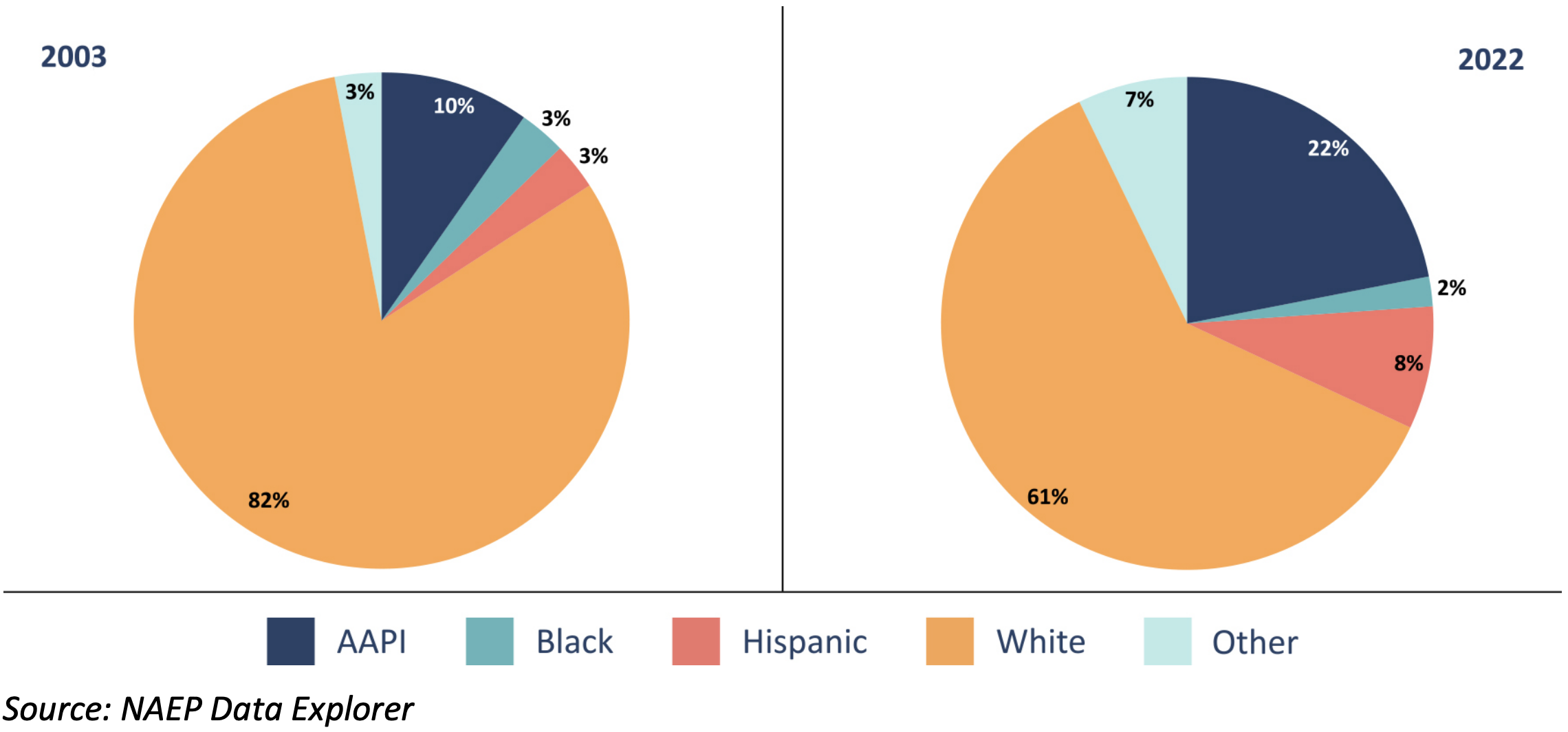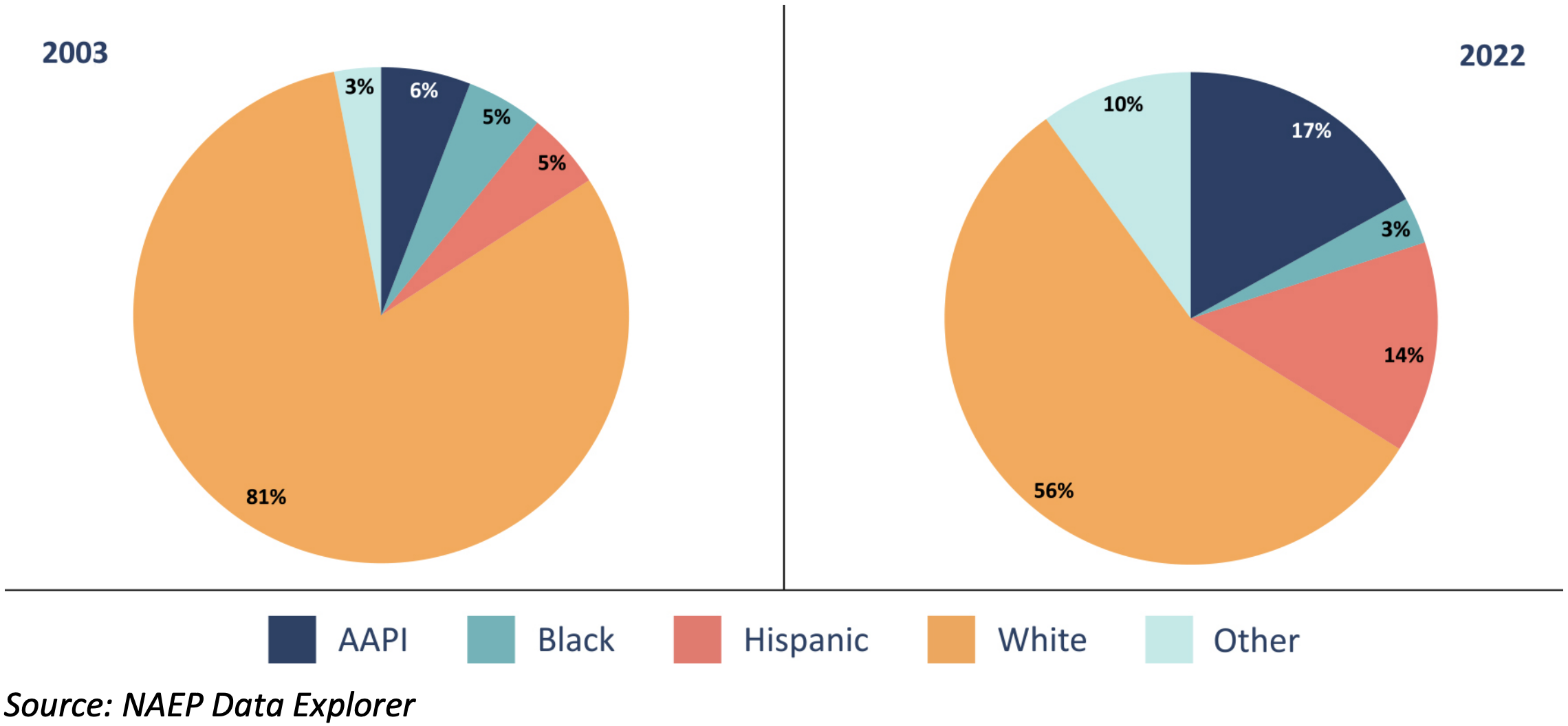Besides suffocating heat, humidity, and wildfires, the summer of 2023 also brought a seismic shift to higher education: the Supreme Court’s striking down of affirmative action in college admissions.
Putting aside the rancorous debates about the rationale and implications of the decision, at the heart of the Harvard case was clear evidence that the university was discriminating against Asian students.
A revealing 2022 study of Harvard admissions found a “substantial penalty against Asian American applicants relative to their white counterparts.” Scholars estimated that, given that the overall admissions rate for Asian American applicants at Harvard was around 5 percent, removing what amounted to a handicap would increase their admissions chances by at least 19 percent.
What’s more, the researchers took on a surprisingly candid tone when noting the differences between the Asian and White applicant pool:
While it is widely understood that Asian American applicants are academically stronger than whites, it is startling just how much stronger they are. During the period we analyze, there were 42 percent more white applicants than Asian American applicants overall. Yet, among those who were in the top 10 percent of applicants based on grades and test scores, Asian American applicants outnumbered white applicants by more than 45 percent.
Startling indeed.
Findings from Fordham’s new study, Excellence Gaps by Race and Socioeconomic Status, reminded us of this eye-popping imbalance. Authored by Fordham’s Meredith Coffey and Adam Tyner, the report digs into how race and socioeconomic status (SES) interact to shape academic “excellence gaps”—disparities in performance among groups of students achieving at the highest levels.
Their analysis utilizes nearly twenty years of eighth-grade reading and math assessment data (2003 to 2022) to document the progress of America’s highest-performing students, meaning those who earned “Advanced” scores on the National Assessment of Educational Progress, a.k.a., “The Nation’s Report Card.” Among other things, it finds that fewer Black and Hispanic students from the highest-SES group (those with college-educated mothers) are achieving at Advanced levels than we would expect given their socioeconomic status. That’s a disparity clearly worth our attention.
But so are the study’s findings on Asian American high achievers—who deserve our attention for a different reason. Two decades ago, Asian American and Pacific Islander students (AAPI) were already disproportionately reaching the Advanced level of performance, and they’ve only made more progress since then (Tables FW-1–2). Part of that progress is due to raising the floor: Coffey and Tyner find that, among students in the lower-SES ranks (those whose mothers have a high school diploma or less), there’s been a substantial increase over time in the proportion of AAPI students who are Advanced.
Add it up and we can see that the AAPI advantage has only grown.
Table FW-1. Percentage of students scoring at the Advanced level in math in 2003 and 2022

Table FW-2. Percentage of students scoring at the Advanced level in reading in 2003 and 2022

Now let’s put these numbers into a context that is familiar to admissions officers at highly-selective colleges. If we consider both the percentage of students in each racial subgroup achieving at the Advanced level and their share of the student population, what does the racial composition of students scoring Advanced look like? Here are the pie charts for our top students in 2003 and again in 2022.
Figure FW-1. Racial composition of eighth grade students at the Advanced level in math in 2003 and in 2022

It’s clear that the proportion of Advanced students who are White dropped significantly, from 82 to 61 percent (Figure FW-1). Yet most of the diversity gains came from Asian students (who went from 10 to 22 percent) and, to a lesser degree, Hispanic students (from 3 to 8 percent). Unfortunately, the proportion of Advanced students who are Black decreased over that time, from a tragically low 3 to 2 percent.
Now let’s see how it looks for reading in 2003 and then in 2022:
Figure FW-2. Racial composition of eighth grade students at the Advanced level in reading in 2003 and in 2022

The pattern in Figure FW-2 is largely the same: big declines in the proportion of White students, with large gains for Asian and Hispanic students. The Black proportion is again down, from 5 to 3 percent.
—
What can we take from all of this, particularly when it comes to Asian high achievers?
First, they are making solid gains and their success deserves to be recognized.
Second, although high-achieving students in eighth grade in the United States are a more diverse group than twenty years ago, most of this growing diversity is driven by gains by Asian and Hispanic students. For Hispanic students, that largely tracks the growth of their population as a whole, which has nearly doubled over the past two decades. That’s part of the story for Asian students, too (their numbers are up by a third), but it’s also due to their improved performance. Case in point: Our study finds that Asian students are so high achieving that even those in the lowest-socioeconomic-status group often equal or outperform higher-SES students of other racial and ethnic groups.
Third, we need to learn from the success of AAPI students and their families—not be threatened by it or seek to depress their chances of gaining admission to prestigious institutions. At the national, state, and local levels, policymakers and educators should ask: Are there observable practices among Asian students that could apply more broadly? For instance, are they more likely to participate in extracurricular activities, sign up for more challenging classes, or take part in academic tutoring, clubs, or competitions? Are these behaviors helping AAPI students to reach the highest level of academic achievement? If so, how could smart policies expand those opportunities to students from other communities?
Education reformers spend an inordinate amount of time, energy, and resources (rightly so) on supporting low-performing students. But high performers are often left to fend for themselves. Let’s just say this: It’s not right. We can do better. And we should start doing better today.



